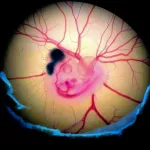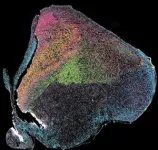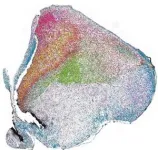(Press-News.org) The pallium is the brain region where the neocortex forms in mammals, the part responsible for cognitive and complex functions that most distinguishes humans from other species. The pallium has traditionally been considered a comparable structure among mammals, birds, and reptiles, varying only in complexity levels. It was assumed that this region housed similar neuronal types, with equivalent circuits for sensory and cognitive processing. Previous studies had identified the presence of shared excitatory and inhibitory neurons, as well as general connectivity patterns suggesting a similar evolutionary path in these vertebrate species. However, the new studies have revealed that, although the general functions of the pallium are equivalent among these groups, its developmental mechanisms and the molecular identity of its neurons have diverged substantially throughout evolution.
The first study, conducted by Eneritz Rueda-Alaña and Fernando García-Moreno at Achucarro, with the support of a multidisciplinary team of collaborators from the Basque research centers CICbioGUNE and BCAM, the Madrid-based CNIC, the University of Murcia, Krembil (Canada), and Stockholm University, shows that while birds and mammals have developed circuits with similar functions, the way these circuits form during embryonic development is radically different. "Their neurons are born in different locations and developmental times in each species," explains Dr. García-Moreno, head of the Brain Development and Evolution laboratory, "indicating that they are not comparable neurons derived from a common ancestor." Using spatial transcriptomics and mathematical modeling, the researchers found that the neurons responsible for sensory processing in birds and mammals are formed using different sets of genes. "The genetic tools they use to establish their cellular identity vary from species to species, each exhibiting new and unique cell types." This all indicates that these structures and circuits are not homologous, but rather the result of convergent evolution, meaning that "they have independently developed these essential neural circuits through different evolutionary paths."
The second study further explores these differences. Conducted at Heidelberg University (Germany) and co-directed by Bastienne Zaremba, Henrik Kaessmann, and Fernando García-Moreno, it provides a detailed cell type atlas of the avian brain and compares it with those of mammals and reptiles. "We were able to describe the hundreds of genes that each type of neuron uses in these brains, cell by cell, and compare them with bioinformatics tools." The results show that birds have retained most inhibitory neurons present in all other vertebrates for hundreds of millions of years. However, their excitatory neurons, responsible for transmitting information in the pallium, have evolved in a unique way. Only a few neuronal types in the avian brain were identified with genetic profiles similar to those found in mammals, such as the claustrum and the hippocampus, suggesting that some neurons are very ancient and shared across species. "However, most excitatory neurons have evolved in new and different ways in each species," details Dr. García-Moreno.
The studies, published in Science, used advanced techniques in spatial transcriptomics, developmental neurobiology, single-cell analysis, and mathematical modeling to trace the evolution of brain circuits in birds, mammals, and reptiles.
Rewriting the Evolutionary History of the Brain
"Our studies show that evolution has found multiple solutions for building complex brains," explains Dr. García-Moreno. "Birds have developed sophisticated neural circuits through their own mechanisms, without following the same path as mammals. This changes how we understand brain evolution."
These findings highlight the evolutionary flexibility of brain development, demonstrating that advanced cognitive functions can emerge through vastly different genetic and cellular pathways.
The importance of studying brain evolution
"Our brain makes us human, but it also binds us to other animal species through a shared evolutionary history," explains Dr. García-Moreno. The discovery that birds and mammals have developed neural circuits independently has major implications for comparative neuroscience. Understanding the different genetic programs that give rise to specific neuronal types could open new avenues for research in neurodevelopment. Dr. García-Moreno advocates for this type of fundamental research: "Only by understanding how the brain forms, both in its embryonic development and in its evolutionary history, can we truly grasp how it functions."
References:
Rueda-Alaña E, Senovilla-Ganzo R, Grillo M, Vázquez E, Marco-Salas S, Gallego-Flores T, Ftara A, Escobar L, Benguría A, Quintas A, Dopazo A, Rábano M, dM Vivanco M, Aransay AM, Garrigos D, Toval A, Ferrán JL, Nilsson M, Encinas JM, De Pitta M, García-Moreno F (2025). Evolutionary convergence of sensory circuits in the pallium of amniotes. Science (in press). doi: 10.1126/science.adp3411
Zaremba B, Fallahshahroudi A, Schneider C, Schmidt J, Sarropoulos I, Leushkin E, Berki B, Van Poucke E, Jensen P, Senovilla-Ganzo R, Hervas-Sotomayor F, Trost N, Lamanna F, Sepp M, García-Moreno F, Kaessmann H (2025). Developmental origins and evolution of pallial cell types and structures in birds. Science (in press). doi: 10.1126/science.adp5182
For more information or scheduling an interview, please contact:
Dr. Fernando García-Moreno
Achucarro Basque Center for Neuroscience
Fernando.garcia-moreno@achucarro.org
946018139
www.phylobrain.org
END
Birds have developed complex brains independently from mammals
Science publishes two studies led by an Ikerbasque researcher at Achucarro Basque Center for Neuroscience and UPV/EHU that reveal their unique evolution
2025-02-13
ELSE PRESS RELEASES FROM THIS DATE:
Protected habitats aren’t enough to save endangered mammals, MSU researchers find
2025-02-13
Images
EAST LANSING, Mich. – Tropical forests are massive biodiversity storehouses. While these rich swathes of land constitute less than one-tenth of Earth’s surface, they harbor more than 60% of known species. Among them is a higher concentration of endangered species than anywhere else on Earth.
However, these regions are also under immense pressure, as tropical land is rapidly being transformed for industrial and agricultural purposes.
Worldwide, regional governments and international groups are establishing new protected areas to slow further loss of threatened species. However, new research appearing in the journal PLOS Biology demonstrates ...
Scientists find new biomarker that predicts cancer aggressiveness
2025-02-13
HOUSTON ― Using a new technology and computational method, researchers from Fred Hutch Cancer Center and The University of Texas MD Anderson Cancer Center have uncovered a biomarker capable of accurately predicting outcomes in meningioma brain tumors and breast cancers.
In the study, published today in Science, the researchers discovered that the amount of a specific enzyme, RNA Polymerase II (RNAPII), found on histone genes was associated with tumor aggressiveness and recurrence. Hyper-elevated levels of RNAPII on these histone genes indicate cancer over-proliferation and potentially contribute to chromosomal changes. These findings point to the use of a new genomic technology as ...
UC Irvine astronomers gauge livability of exoplanets orbiting white dwarf stars
2025-02-13
Irvine, Calif., Feb. 13, 2025 — Among the roughly 10 billion white dwarf stars in the Milky Way galaxy, a greater number than previously expected could provide a stellar environment hospitable to life-supporting exoplanets, according to astronomers at the University of California, Irvine.
In a paper published recently in The Astrophysical Journal, a research team led by Aomawa Shields, UC Irvine associate professor of physics and astronomy, share the results of a study comparing the climates of exoplanets at two different stars. One is a hypothetical white dwarf that’s passed through much of its life cycle and is on a slow path ...
Child with rare epileptic disorder receives long-awaited diagnosis
2025-02-13
Researchers at Baylor College of Medicine, the Jan and Dan Duncan Neurological Research Institute (Duncan NRI) at Texas Children's Hospital, Baylor Genetics and collaborating institutions provided a long-awaited and rare genetic diagnosis in a child with Lennox-Gastaut syndrome, a type of developmental epileptic encephalopathy (DEE), associated with a severe, complex form of epilepsy and developmental delay.
Their recent study reports that a highly complex rearrangement of fragments from chromosomes 3 and 5 altered the typical organization of genes in the q14.3 region of chromosome ...
WashU to develop new tools for detecting chemical warfare agent
2025-02-13
Mustard gas, also known as sulfur mustard, is one of the most harmful chemical warfare agents, causing blistering of the skin and mucous membranes on contact. Chemists at Washington University in St. Louis have been awarded a $1 million contract with the Defense Threat Reduction Agency (DTRA) to develop a new way to detect the presence of this chemical weapon on the battlefield.
As with many chemical threats, quick identification of sulfur mustard is key to minimizing its damage, according to Jennifer Heemstra, the Charles Allen Thomas Professor of Chemistry in Arts & Sciences and principal investigator of the new DTRA grant.
“It’s ...
Tufts researchers discover how experiences influence future behavior
2025-02-13
Neuroscientists have new insights into why previous experiences influence future behaviors. Experiments in mice reveal that personal history, especially stressful events, influences how the brain processes whether something is positive or negative. These calculations ultimately impact how motivated a rodent is to seek social interaction or other kinds of rewards.
In a first of its kind study, Tufts University School of Medicine researchers demonstrate that interfering with the neural circuits responsible ...
Engineers discover key barrier to longer-lasting batteries
2025-02-13
Lithium nickel oxide (LiNiO2) has emerged as a potential new material to power next-generation, longer-lasting lithium-ion batteries. Commercialization of the material, however, has stalled because it degrades after repeated charging.
University of Texas at Dallas researchers have discovered why LiNiO2 batteries break down, and they are testing a solution that could remove a key barrier to widespread use of the material. They published their findings online Dec. 10 in the journal Advanced Energy Materials.
The team plans first to manufacture LiNiO2 batteries in the lab and ...
SfN announces Early Career Policy Ambassadors Class of 2025
2025-02-13
WASHINGTON — The Society for Neuroscience (SfN) has selected 10 members from a highly competitive applicant pool to participate in the Society’s annual Capitol Hill Day on March 11–13, 2025. The 10 Early Career Policy Ambassadors (ECPAs), representing many career stages and geographic locations, were chosen for their dedication to advocating for the scientific community, their desire to learn more about effective means of advocacy, and their experience as leaders in their labs and community.
The ambassadors are:
Izan Chalen, University of Illinois Urbana-Champaign
Nicole D’Souza, University of California, Riverside
Lana Ruvolo Grasser, PhD, Department ...
YOLO-Behavior: A new and faster way to extract animal behaviors from video
2025-02-13
Collecting video data is the long-established way biologists collect data to measure the behaviour of animals and humans. Videos might be taken of human subjects sitting in front of a camera while eating in a group in the University of Konstanz, or researchers using cameras to measure how often house sparrow parents visit their nests on Lundy Island, UK. All these video datasets have one thing in common: after collecting them, researchers need to painstakingly watch each video, manually mark down who, where and when each behaviour of interest happens—a process known as “annotation”. ...
Researchers identify a brain circuit for creativity
2025-02-13
KEY TAKEAWAYS
Brigham researchers analyzed data from 857 patients across 36 fMRI brain imaging studies and mapped a common brain circuit for creativity.
They derived the circuit in healthy individuals and then predicted which locations of brain injury and neurodegenerative disease might alter creativity.
The study found that changes in creativity in people with brain injury or neurodegenerative disease may depend on the location of injury in reference to the creativity circuit.
A new study led by ...
LAST 30 PRESS RELEASES:
University of Oklahoma researcher awarded funding to pursue AI-powered material design
Exploring how the visual system recovers following injury
Support for parents with infants at pediatric check-ups leads to better reading and math skills in elementary school
Kids’ behavioral health is a growing share of family health costs
Day & night: Cancer disrupts the brain’s natural rhythm
COVID-19 vaccination significantly reduces risk to pregnant women and baby
The role of vaccination in maternal and perinatal outcomes associated with COVID-19 in pregnancy
Mayo Clinic smartwatch system helps parents shorten and defuse children's severe tantrums early
Behavioral health spending spikes to 40% of all children’s health expenditures, nearly doubling in a decade
Digital cognitive behavioral treatment for generalized anxiety disorder
Expenditures for pediatric behavioral health care over time and estimated family financial burden
Air conditioning in nursing homes and mortality during extreme heat
The Alps to lose a record number of glaciers in the next decade
What makes a good proton conductor?
New science reporting guide published for journalists in Bulgaria
New international study reveals major survival gaps among children with cancer
New science reporting guide published for journalists in Turkey
Scientists develop a smarter mRNA therapy that knows which cells to target
Neuroanatomy-informed brain–machine hybrid intelligence for robust acoustic target detection
Eight SwRI hydrogen projects funded by ENERGYWERX
The Lundquist Institute and its start-up company Vitalex Biosciences Announces Strategic Advancement of Second-Generation fungal Vaccine VXV-01 through Phase 1 Trials under $40 Million Competitive Con
Fine particles in pollution are associated with early signs of autoimmune disease
Review article | Towards a Global Ground-Based Earth Observatory (GGBEO): Leveraging existing systems and networks
Penn and UMich create world’s smallest programmable, autonomous robots
Cleveland researchers launch first major study to address ‘hidden performance killer’ in athletes
To connect across politics, try saying what you oppose
Modulating key interaction prevents virus from entering cells
Project explores barriers to NHS career progression facing international medical graduates
Jeonbuk National University researchers explore the impact of different seasonings on the flavor perception of Doenjang soup
Two Keck Medicine of USC Hospitals named Leapfrog Top Teaching Hospitals
[Press-News.org] Birds have developed complex brains independently from mammalsScience publishes two studies led by an Ikerbasque researcher at Achucarro Basque Center for Neuroscience and UPV/EHU that reveal their unique evolution






